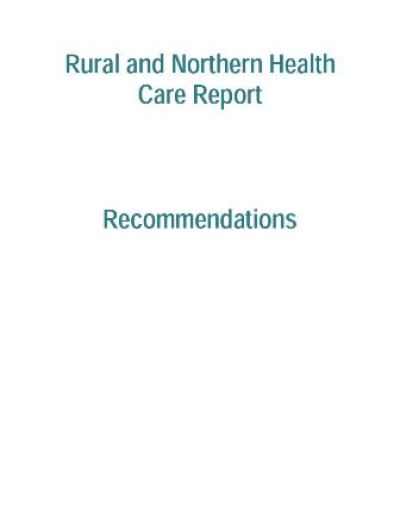The Impact of Resource Development on Health Care in Rural Canada
The growing interest in expanding resource development and infrastructure projects in Canada has been fueled by American tariffs and concerns about a potential prolonged recession. These developments have significant implications for the country, particularly in terms of environmental sustainability, relationships with Indigenous communities, and the quality of health services in rural and remote areas.
In a study conducted with environmental health researcher Barbara Oke in northern British Columbia, we explored how large-scale resource projects affect local health-care systems. Our findings reveal that these projects can place considerable strain on already overburdened health services, especially in small communities where resources are limited.
Strain on Local Health-Care Services
Northern British Columbia has seen a surge in major capital investments, including hydroelectric dams, liquefied natural gas (LNG) facilities, pipelines, and mines. These projects bring an influx of workers, often from outside the region, which creates additional pressure on local health-care providers.
Interviews with leaders from Northern Health, the primary health-care provider in the region, highlight the direct link between development projects and the challenges faced by the health system. Smaller communities are particularly vulnerable because their health-care infrastructure is often under-resourced and unable to handle sudden increases in demand.
Managing Health Service Impacts
The way a project manages its health service impacts plays a crucial role in determining the level of strain on local systems. When workers are housed in well-managed camps with access to medical support, the pressure on local health-care facilities is reduced. However, when adequate accommodation and health services are not provided, the burden falls on local emergency departments and hospitals.
An Older Workforce
Contrary to common assumptions that project workers are predominantly young and physically active, our research found that most workers seeking health care were older individuals with chronic illnesses or multiple health risk factors. This means that the pressure on health services comes not from typical workplace injuries but from general health needs that are common in any population.
One health-care professional noted: “It’s not that [project workers] are asking for special services, but just having more people needing health care adds to [the] pressure.”
Emergency Departments Under Pressure
Emergency departments in local hospitals and health centres are the most affected by these changes. Many communities in northern B.C. lack walk-in clinics, and doctor’s offices are already at full capacity. Without on-site medical support from the project itself, workers must rely on local emergency departments, which are meant to handle urgent cases.
When emergency staff are required to manage non-urgent issues such as prescription renewals, sick notes, or routine ailments, it exacerbates existing challenges and congestion in these facilities.
Broader Impacts on the Health System
The pressures from resource projects extend beyond emergency departments. Primary care, infectious disease management, diagnostic and lab services, and administrative and ambulance transfer services are also affected. Rising workloads, combined with higher wages in the private sector and increased living costs, make it difficult to retain and recruit staff in critical roles such as housekeeping, food services, laundry, administration, ambulance services, and care aide positions.
Cumulative Effects of Multiple Projects
While the impact of a single project may seem manageable, the cumulative effect of multiple projects in the same area can be overwhelming for local health-care systems. This highlights the need for careful planning and coordination between governments, industries, and health-care providers.
Balancing Development and Health Care
Resource development brings economic benefits that can positively impact community health when managed effectively. However, if not properly addressed, the pressures placed on local health-care services can be severe. It is essential for governments and businesses to consider the long-term effects of their projects on rural and remote communities, especially those with already strained health-care systems.
Barbara Oke contributed to this article. She recently completed her Master’s of Arts in Political Science at UNBC. The authors do not work for, consult, own shares in, or receive funding from any company or organization that would benefit from this article, and have disclosed no relevant affiliations beyond their academic appointment.







